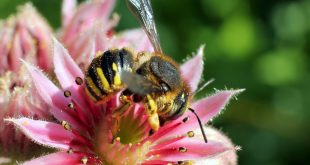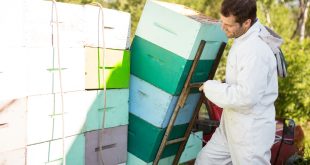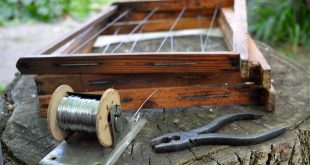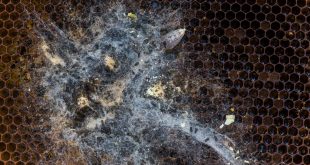Uncover the fascinating process of harvesting leafcutter bee cocoons with our insightful article. Ideal for both novice and experienced beekeepers, this guide offers step-by-step instructions on safely and effectively harvesting these precious cocoons, crucial for nurturing and growing a healthy leafcutter bee population.
Read More »Beehive Lifts & Carts for Effortless Beekeeping
Beekeeping can be an enjoyable hobby but it comes with its share of challenges, more so, when your operations expand. Your one beehive that initially required a little work easily demands more once your hives are more than you can handle. Fortunately, beehive lifting equipment and carts grant some leverage at this point of your operation. These ingeniously designed technological advancements help eliminate the heavy work required while working at the apiary. The thoughtful and tested gadgets help avoid back pain and allow the beekeeper to work more efficiently without straining. Some of the beekeeping equipment that requires some muscle to move around include beehives, loaded honey supers (50+ pounds), supplement feed buckets, honey pails, hive stand blocks and other beekeeping equipment. Winter is particularly the time of the year when you might be forced to carry the hives in and out of the apiary. Furthermore, the peak honey seasons for huge operations prove to be the most challenging. Ferrying tonnes of full supers is a task that will require some special equipment. As such, in this article, we'll discuss the best beehive lifting equipment and carts that do a great job at the task.
Read More »What are Beekeeping Wiring Boards?
Enhance your beekeeping skills with our guide on wiring beehive frames! Wiring adds strength and support to the wax comb, preventing sagging and ensuring durability during honey extraction. However, not all frames require wiring, especially those in deep brood boxes not exposed to extraction forces. While wiring offers structural benefits, it can complicate comb cutting, especially when removing queen cells or harvesting comb. Despite these nuances, wiring is a valuable skill for beekeepers, providing a balance between frame strength and usability. Dive into the detailed methods and considerations for wiring beehive frames in our article.
Read More »Using a Bee Frame Wiring Jig
Discover the art of frame wiring in beekeeping! Our latest article at BeeKeepClub dives into the world of bee frame wiring jigs. Whether you're a novice beekeeper or a seasoned pro, learn how a wiring jig can streamline your hive maintenance, ensuring sturdy and reliable frames for your bees. We cover the basics, and the benefits, and provide step-by-step guidance on using a wiring jig effectively. Enhance your beekeeping skills and ensure the well-being of your colony with this essential tool.
Read More »Wax Moth Traps and Control for Beekeeping
Wax moth traps and control for beekeeping employ a number of methods, which can be either chemical or non-chemical. The use of traps is great for beekeepers who do not want to add chemicals into the environment. Some of the chemical compounds that are used in wax moth control are …
Read More » BeeKeepClub Resources and Guides for Beekeepers
BeeKeepClub Resources and Guides for Beekeepers





